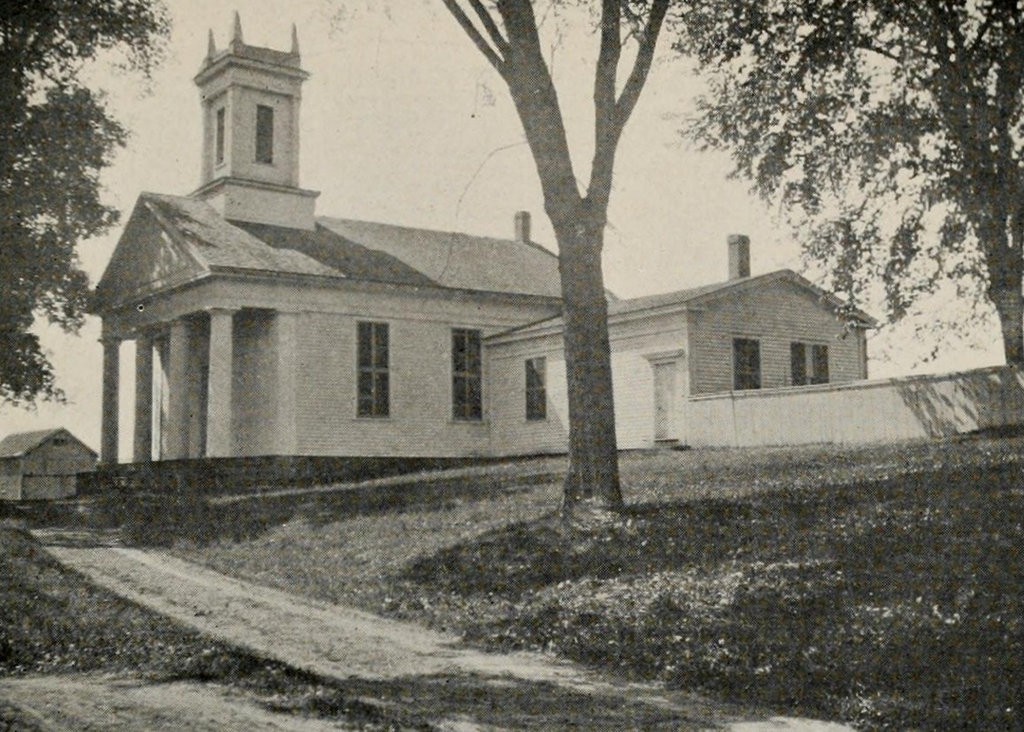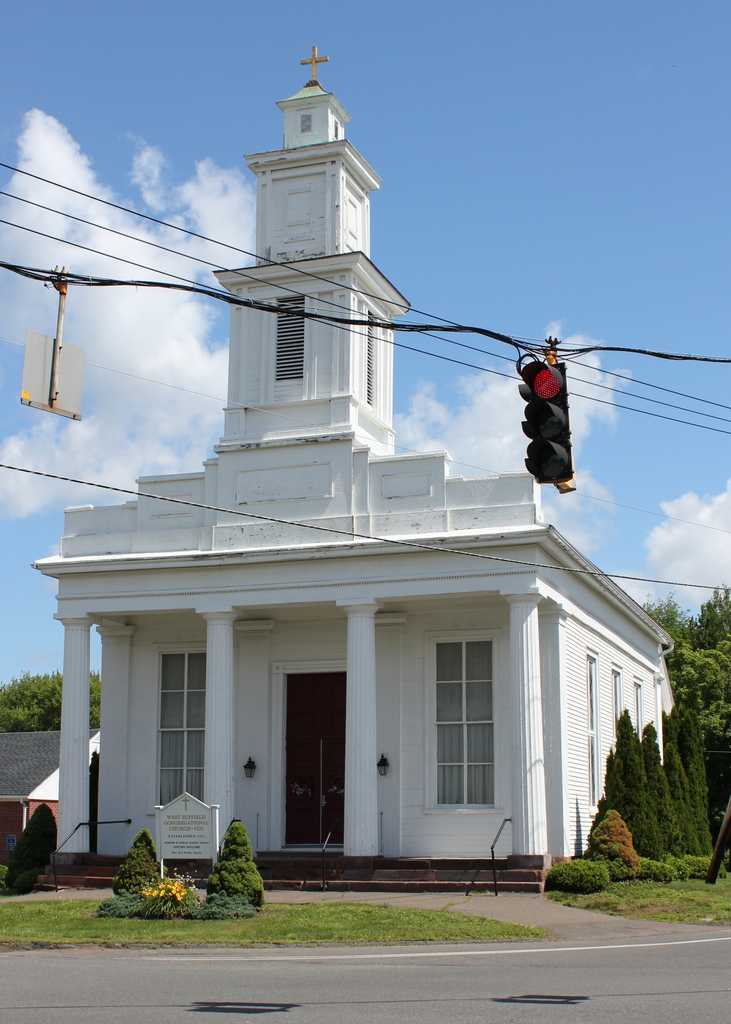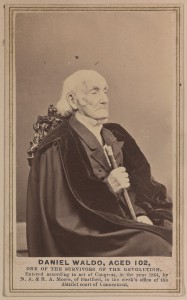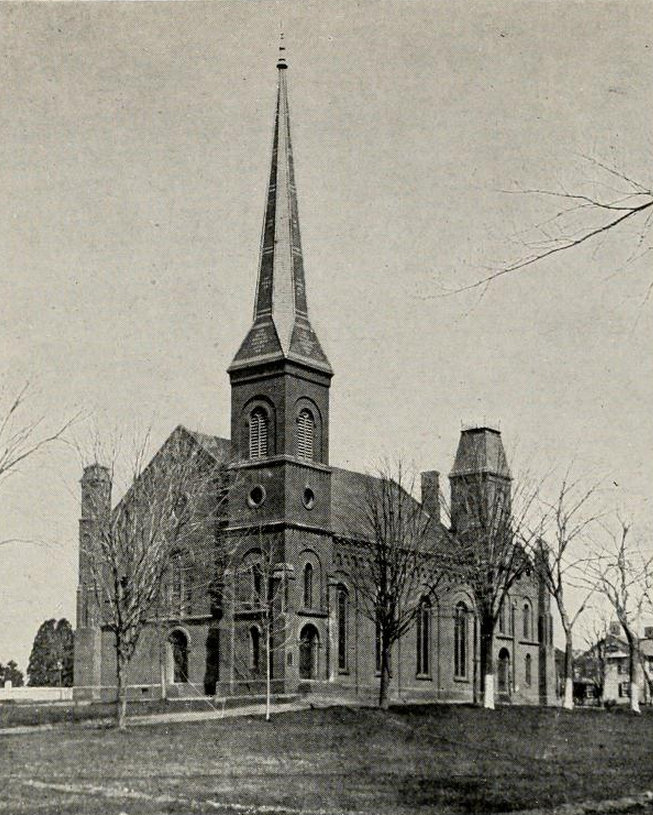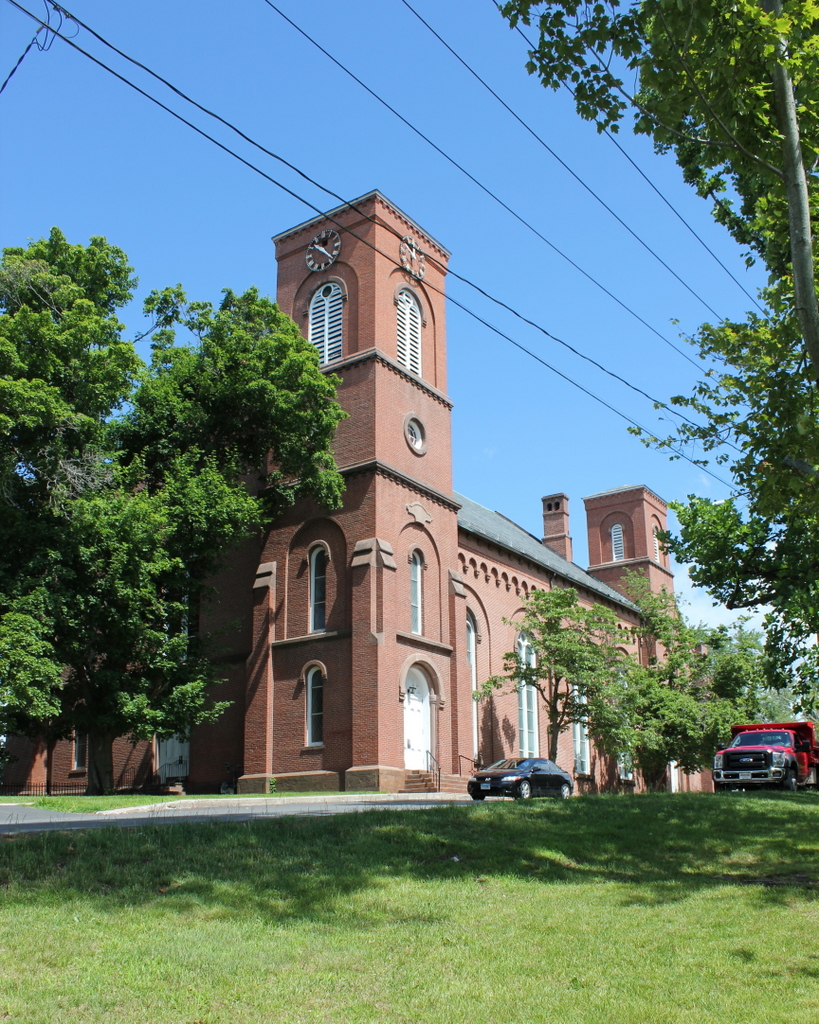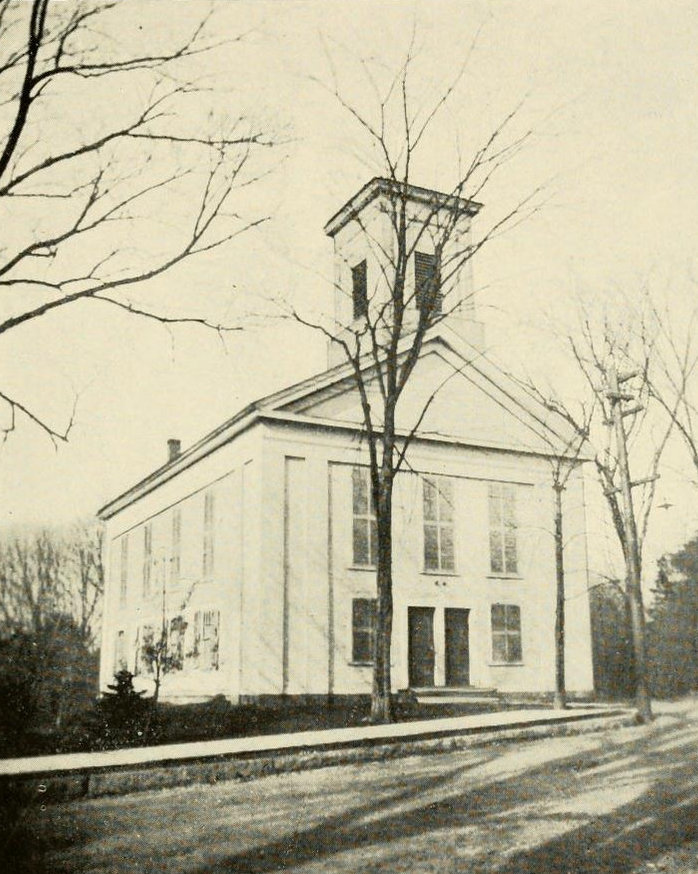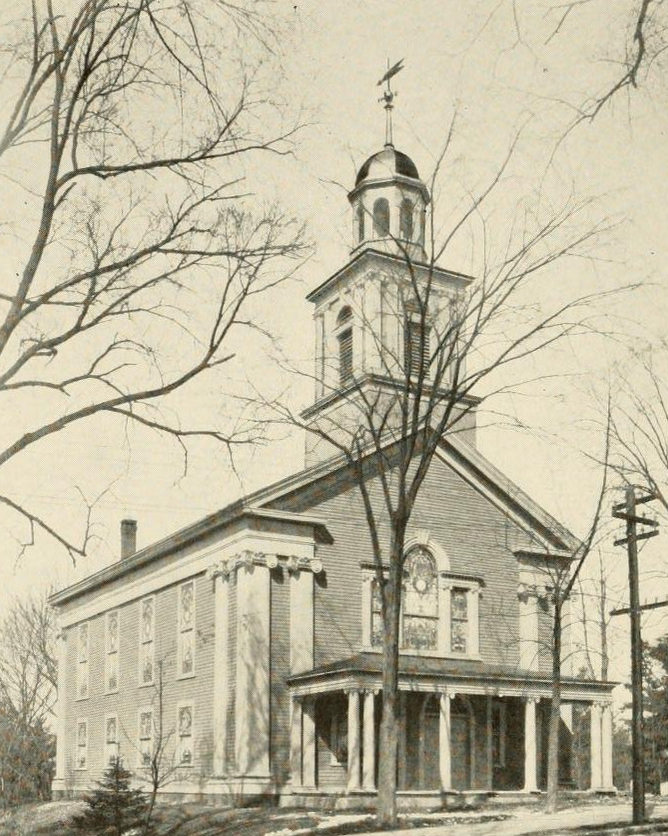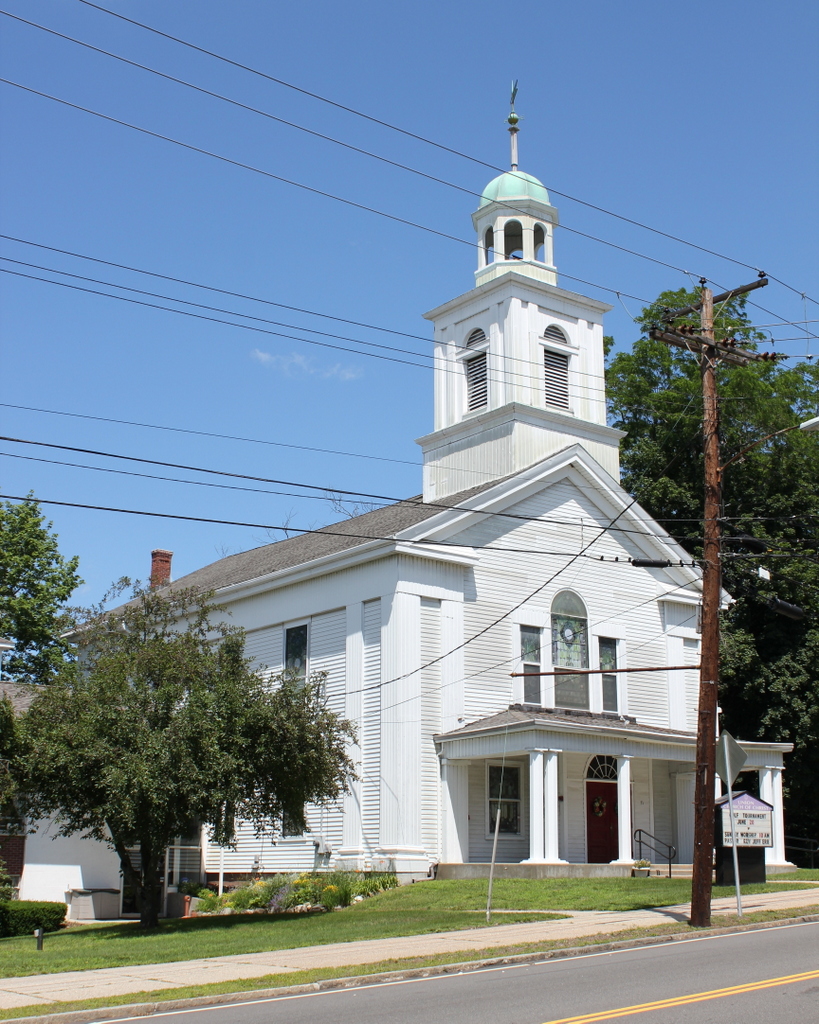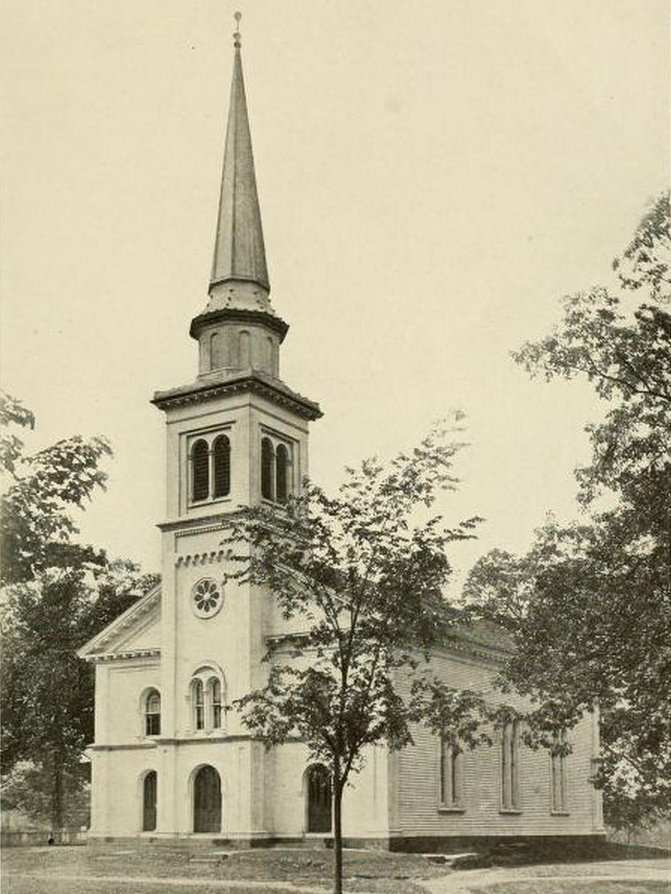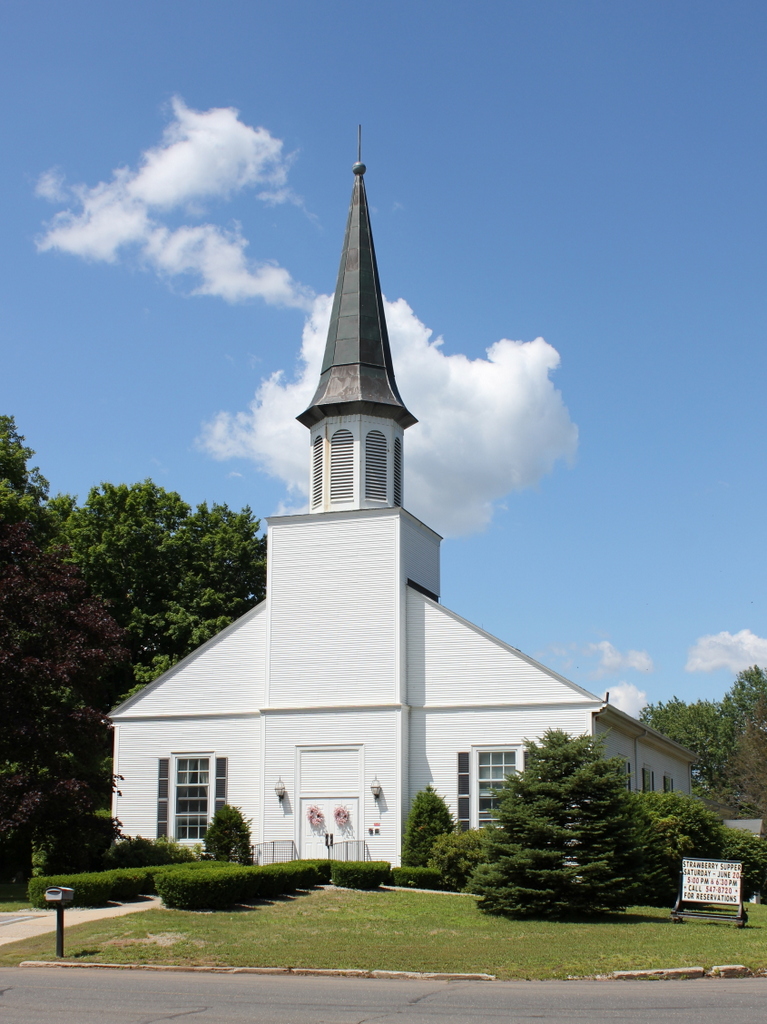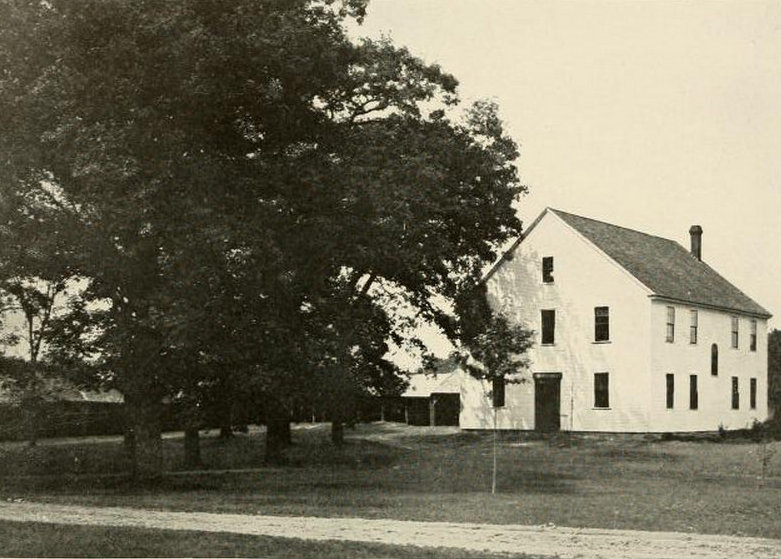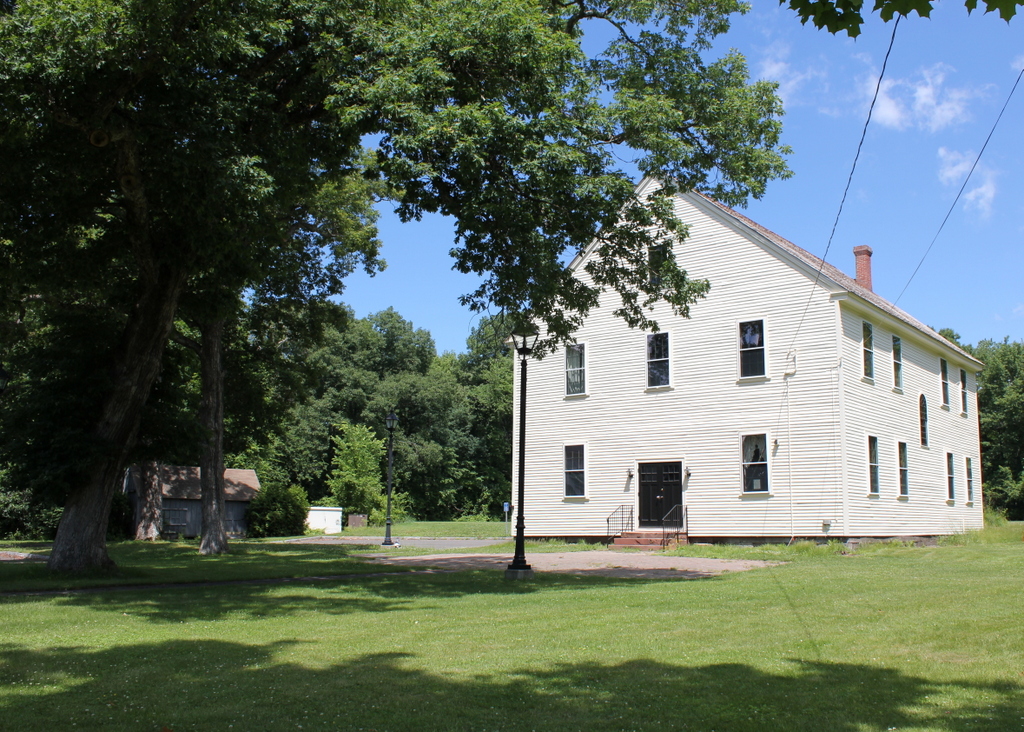The First Baptist Church in Suffield, around 1920. Image from Celebration of the Two Hundred and Fiftieth Anniversary of the Settlement of Suffield, Connecticut (1921).
The church in 2015:
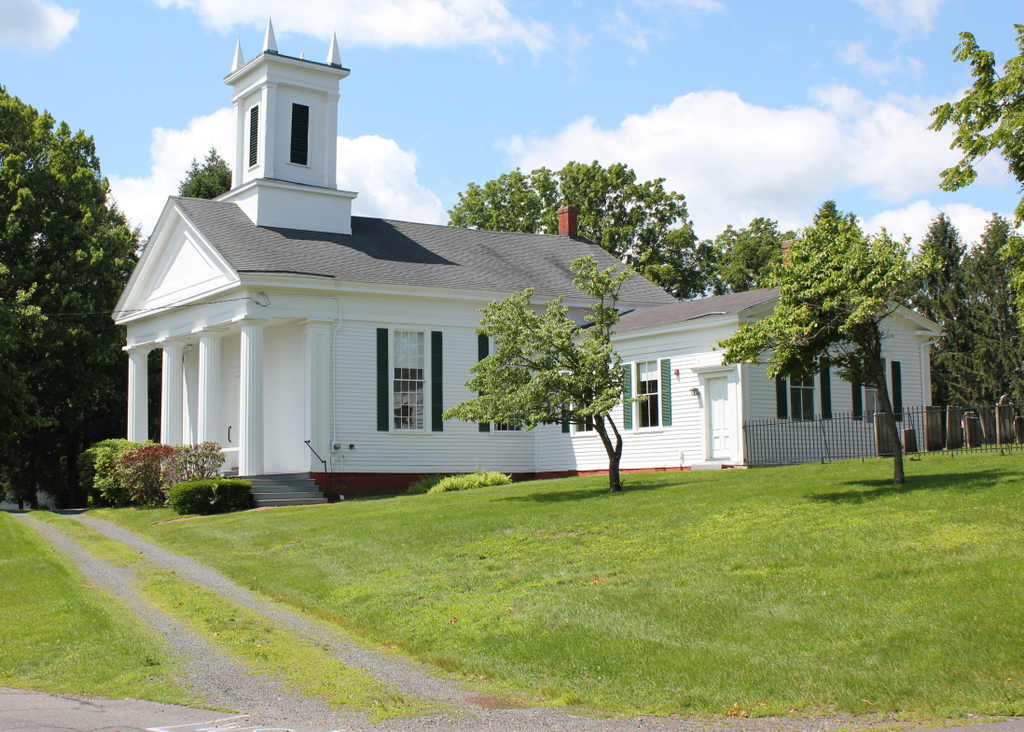
Baptist churches were rare in 18th century New England; churches could only be established with the approval of the colonial legislature, and citizens paid church taxes to support the official colonial church, the Congregational church. However, following the Great Awakening, other denominations began establishing churches, including the Baptists. The first Baptist church in Hartford County was built here in 1769, just across the street from the present-day church, at the intersection of Hill Street and Russell Avenue. This small settlement, some three miles from the main village of Suffield, became the center of Baptist activity in the area.
The original building was replaced in 1793 with a brick one, located on the same spot as the current one. Because of its remote location, though, it was inconvenient for many people from eastern Suffield to attend, so in 1805, the Second Baptist Church was established in the center of town. Their present-day meeting house was built in 1840, a large brick structure that contrasts with the small present-day First Baptist Church seen here, which was built in 1846. The Zion’s Hill Cemetery is located the church, with gravestones dating back to the 1700s, including Joseph Hastings, the founder of the church.
The First Baptist Church continued to meet here until the 1920s, and for nearly a century the building has not been regularly used. However, it is still occasionally used for special church services, which are limited to the summer because of the building’s lack of heat. Today, the church is well-preserved, and it forms the centerpiece of the Hastings Hill Historic District on the National Register of Historic Places.

